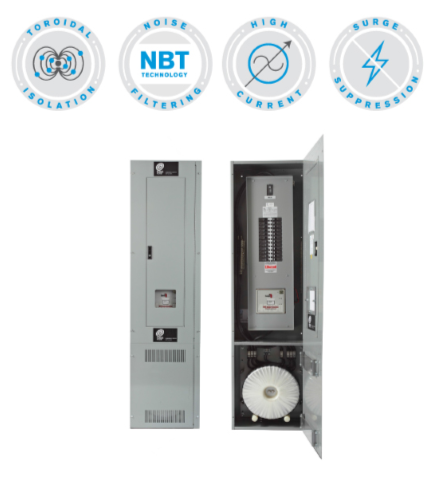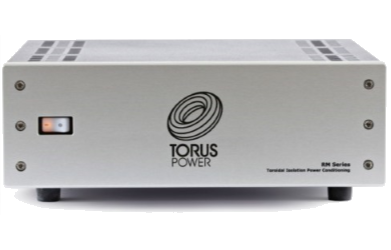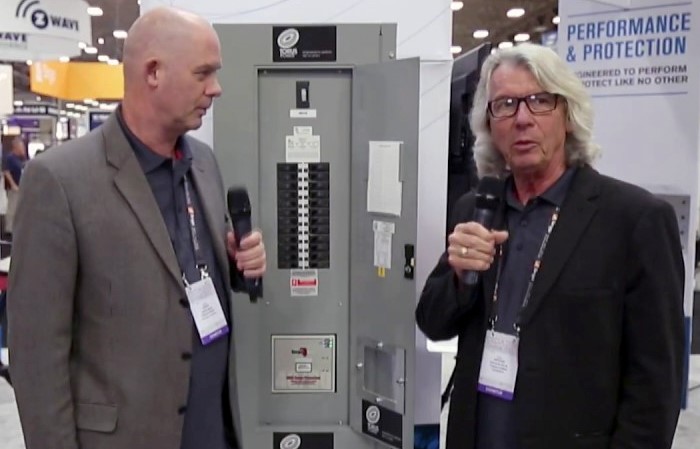Industry veteran explores the popularity of Toroidal Isolation and the All-in-One panel
Nearly a decade ago, Torus Power’s All-in-One Toroidal Isolation transformer panel was conceived and today, it remains one of the best-selling units for studio applications, commercial projects, and large, luxury home installation where clean power is a must to ensure the performance quality of the high-end audiovisual and control systems. Delivering consistent, clean power, the Torus Power All-in-One unit eliminates power surges, sags, and brownouts that affect the performance and longevity of AV components. The All-in-One is an easy choice for home technology professionals, commercial integrators, and studio designers, to improve the performance of any system. It’s also incredibly easy to install, which helps remove any resistance the AV integrators might face from electricians.
Torus Power President and COO Kevin Main recently caught up with Art Kelm to talk about the All-in-One panel, its unique history, and the benefits of using Toroidal Isolation in any system.
Kevin: Art, tell us a little bit about what this panel does.
Art: Well, I originally started thinking about a panel like this eight or nine years ago. My primary purpose was designing recording studios for homes, as well as smaller professional studios, such as single-room studios. I needed an isolation transformer so I could isolate my systems from outside influences like air conditioning motors, refrigerator motors, and things of that nature. And it had to be very simple to install. I found that as I was installing transformers and panel boards, the electricians were getting confused with the internal wiring between the two. I thought a great solution would be to create an all-in-one panel, where all the electrician has to do is bring in three wires—a hot, a hot, and a ground—and then wire the outputs the same way they would wire a normal power board.
 Kevin: Art, initially the design was for recording studios, but now the application has become much more widespread. I see it in custom installation applications for big home theaters, as well as commercial projects where continuous clean power is critical, such as medical facilities and clinics. Tell us about some of the many applications for this unit.
Kevin: Art, initially the design was for recording studios, but now the application has become much more widespread. I see it in custom installation applications for big home theaters, as well as commercial projects where continuous clean power is critical, such as medical facilities and clinics. Tell us about some of the many applications for this unit.
Art: Well, again, the idea began with an easy-to-install product for recording studios. In medical application, commercial theaters, and large luxury homes, you design systems with a ground bus, or you use medical grade receptacles with IG ground. That’s all about eliminating noise and improving performance. So the All-in-One has migrated into a bigger product than original intended, which is a good thing. It can easily scale to these kinds of applications because of its robust design. It has an industrial strength panel board, all copper bussing, and bolt-in breakers, all of the highest quality available.
Kevin: Let’s move away from this specific product and talk about an isolation transformer. A lot of people are under the impression that our products are all about power conditioning. But power isolation is different than power conditioning. What are some of the differences and what does that do for consumers?
Art: The main objective is getting rid of high frequency noise. Systems that have high frequency noise manifests in video as pixilation and noise. The blacks aren’t as black, the whites aren’t as white, and the contrast isn’t as defined. In an audio system, any time a connection closes, you get a transient between neutral and ground, which can manifest as a click, a pop, or other noise you really don’t want to record or listen to.
Kevin: One of the things I’ve noticed in using an isolation transformer is the difference it makes in the dynamic performance of an audio / video system. Can you talk a little about your experience with that?
Art: That’s true. In a typical electrical distribution system, from the pole outside where the transformer is to the point-of-use is hundreds of feet. When you have an isolation transformer, we have three feet of wire from the transformer to the point-of-use. And the closer you get to the point of use, the less noise you pick up, the better performance, the more dynamic current draw you have. Dynamic current draw is what makes things sound more dynamic, with more transient response and better overall sound.
Kevin: So what originally started out as a product d esigned for convenience and ease-of-use in recording facilities has become more widespread in homes and commercial applications. As an industry veteran who uses and specifies these products, why would you say that is?
esigned for convenience and ease-of-use in recording facilities has become more widespread in homes and commercial applications. As an industry veteran who uses and specifies these products, why would you say that is?
Art: I think that’s because home theaters and home AV systems are a lot more sophisticated than they used to be and consumer demand for the highest quality sound and video has increased. As technology advances, so do consumer expectations. At the same time, today’s equipment is susceptible to power surges, sags, and brown outs. There’s more of a need for this type of product, whether it’s an All-in-One for a large application, a Wall Mount unit, or a rack mount unit for a small, two-channel listening room. Isolation transformers, in general, are more necessary now to maintain performance than they were 10 or 20 years ago.
Why This Is Important: As consumer expectations drive the performance quality of high-end audio / video components, clean power as achieved through Toroidal Isolation becomes critical. Industry veteran Art Kelm describes the benefits of Torus Power products in applications ranging from home cinemas and listening rooms, all the way up to recording studios and healthcare facilities.
